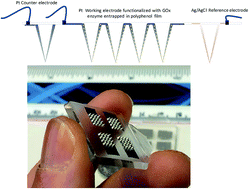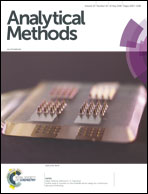A pilot study in humans of microneedle sensor arrays for continuous glucose monitoring
Abstract
Although subcutaneously implanted continuous glucose monitoring (CGM) devices have been shown to support diabetes self-management, their uptake remains low due to a combination of high manufacturing cost and limited accuracy and precision arising from their invasiveness. To address these points, minimally invasive, a solid microneedle array-based sensor for continuous glucose monitoring is reported here. These intradermal solid microneedle CGM sensors are designed for low cost manufacturing. The tolerability and performance of these devices is demonstrated through clinical studies, both in healthy volunteers and participants with type 1 diabetes (T1D). The geometry of these solid microneedles allows them to penetrate dermal tissue without the need for an applicator. The outer surface of these solid microneedles are modified as glucose biosensors. The microneedles sit in the interstitial fluid of the skin compartment and monitor real-time changes in glucose concentration. Optical coherence tomography measurements revealed no major axial movement of the microneedles in the tissue. No significant adverse events were observed and low pain scores were reported when compared to catheter insertion, deeming it safe for clinical studies in T1D. These amperometric sensors also yielded currents that tracked venous blood glucose concentrations, showing a clinically acceptable correlation. Studies in people with T1D gave a mean absolute relative difference (MARD) of 9% (with respect to venous blood glucose) with over 94% of the data points in the A and B zones of the Clarke error grid. These findings provide baseline data for further device development and a larger clinical efficacy and acceptability study of this microneedle intradermal glucose sensor in T1D.

- This article is part of the themed collections: Microfluidic systems with societal impact and Analytical Methods 2018 Most Downloaded Articles


 Please wait while we load your content...
Please wait while we load your content...